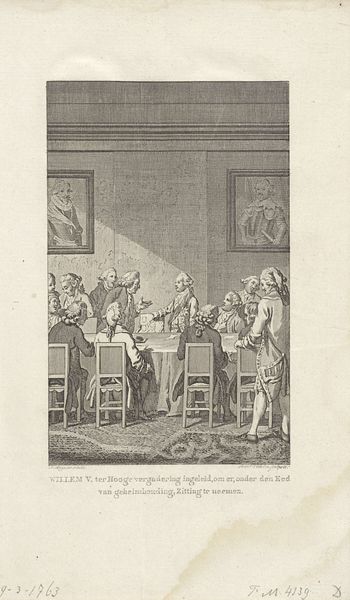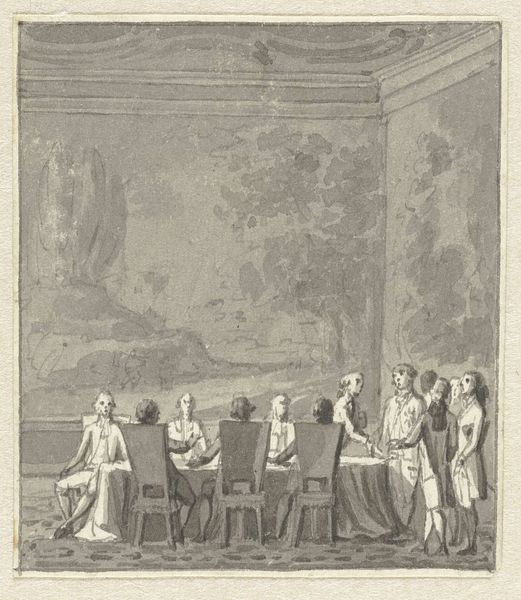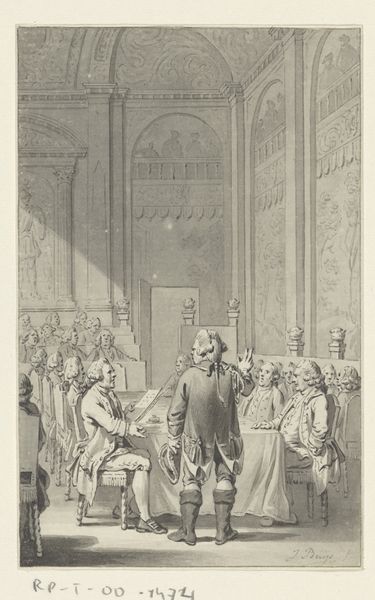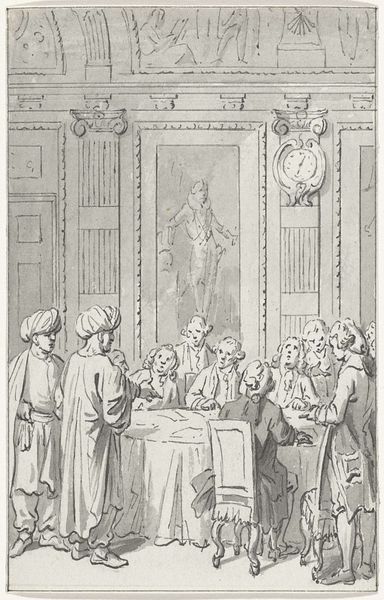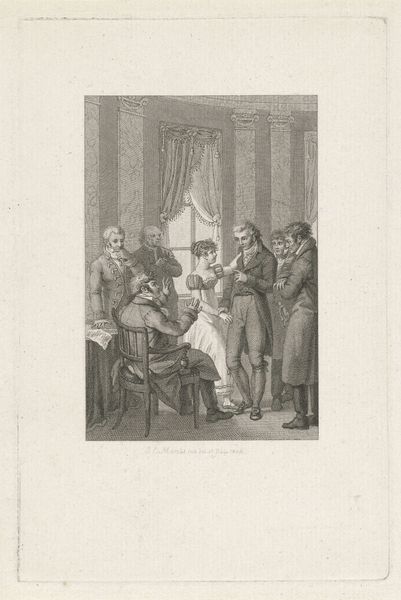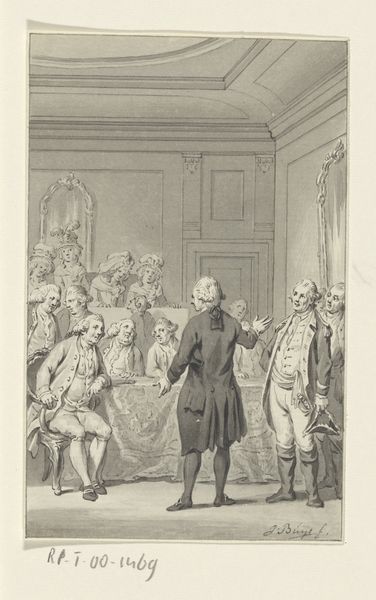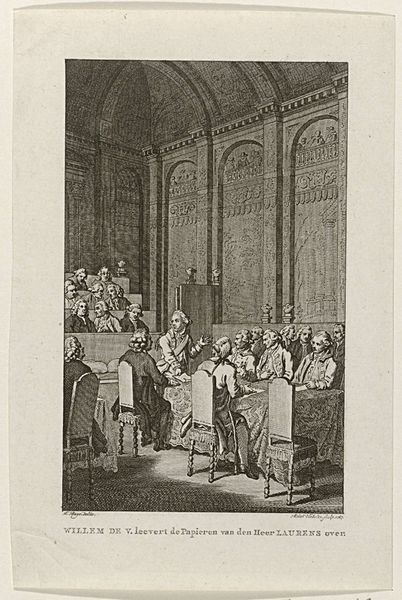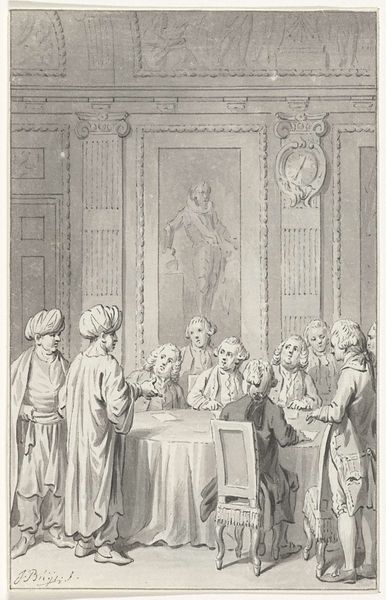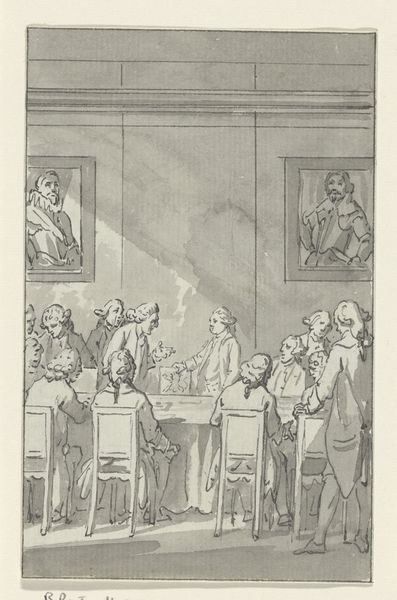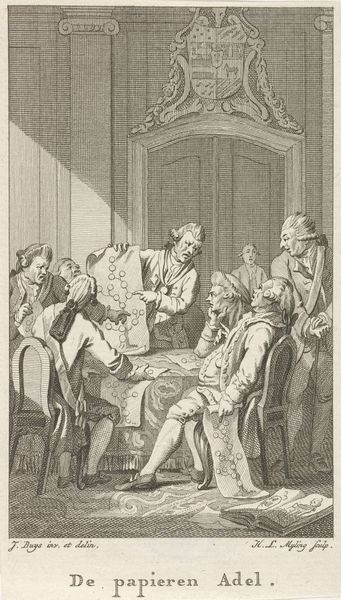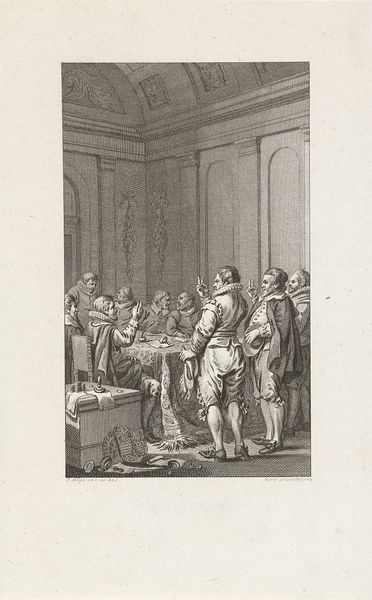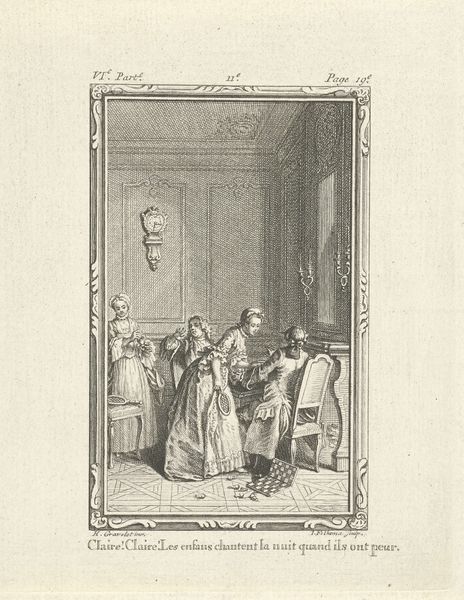
Willem V neemt voor het eerst zitting in de Raad van State, 1763 1795 - 1797
0:00
0:00
jacobusbuys
Rijksmuseum
drawing, engraving
#
portrait
#
drawing
#
neoclacissism
#
old engraving style
#
genre-painting
#
engraving
Dimensions: height 143 mm, width 91 mm
Copyright: Rijks Museum: Open Domain
Curator: Welcome. Today, we're observing "Willem V takes office in the Council of State for the first time, 1763", crafted by Jacobus Buys between 1795 and 1797. It's an engraving that vividly depicts a historical event. Editor: My immediate impression is one of formality and muted tension. The palette is restrained, all subtle gradations of gray. There is an interesting push and pull with the space depicted as both open and cramped due to the number of people. Curator: Precisely. Buys' choice of medium and his Neoclassical leanings emphasize clarity and order. Yet the scene also communicates that tension effectively. Consider the portraits on the wall, almost ancestral guardians looking down on this new political landscape. There is so much history evoked here. Editor: The portraits provide visual anchors. Speaking of anchors, let's delve into the composition itself. The table acts as the horizontal plane. Around it is gathered a circle, a subtle geometric containment that contributes to this mood. The lines are precise but lifeless; not really capturing vitality. The effect on the eye suggests restriction, almost. Curator: Good point! Circles represent cycles of time, containment but the individuals depicted show real complexity, and even anxiety perhaps related to their new responsibilities and place in the world order. I’m struck by the details of clothing – each precisely rendered. It reminds us that image management has always played a role in shaping identity, specifically among royalty and government employees. Editor: A keen observation. It's also worth noting the technical skill required to achieve such detail in an engraving. The fineness of line, the control of tone—it is meticulous and enhances its historical representation. And as a rendering technique, printmaking lends a sense of uniformity; does it comment upon social expectation, would you say? Curator: Quite possibly. The print medium makes this historic moment and symbolic power available to all the people and potentially used for political discourse. Overall, there’s a complex negotiation between past authority and future possibilities encoded in this drawing, rendered visible for all to see. Editor: It leaves me with a lingering feeling of subdued drama. Perhaps in our next dialogue, we can consider how color shifts these sorts of readings for our viewers.
Comments
No comments
Be the first to comment and join the conversation on the ultimate creative platform.


